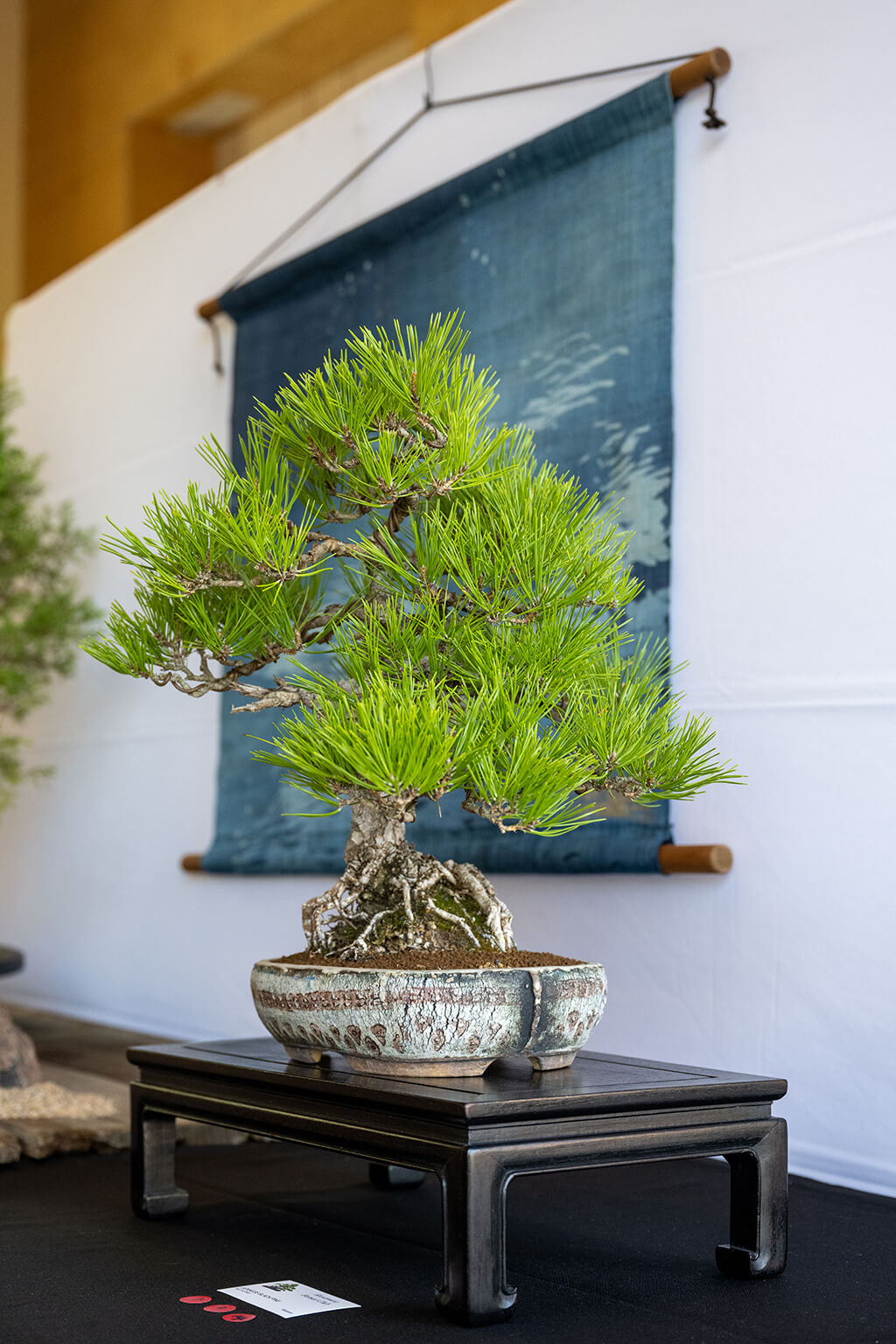Words by Johanna Harlow
“People ask, ‘How many trees do you have?’ I say, ‘Too many!’” chuckles Michael Greenstein, Kusamura Bonsai Club’s newest president, as he swings open the gate to his Los Altos backyard. In this verdant haven, towering redwoods watch over 150-odd bonsai like proud parents over a brood of hatchlings.
Like all dedicated Kusamura members, Michael can detail the characteristics, styling choices and previous owners (if any) of each of his bonsai. “Every tree has a story,” he notes, before scooping up a tree with exposed roots that undulate octopus-like beneath its trunk. “I call this the ballerina blue oak,” he says. “It has nice motion. My job for the next ten or so years is to develop this canopy as the crown of the dancing roots.”
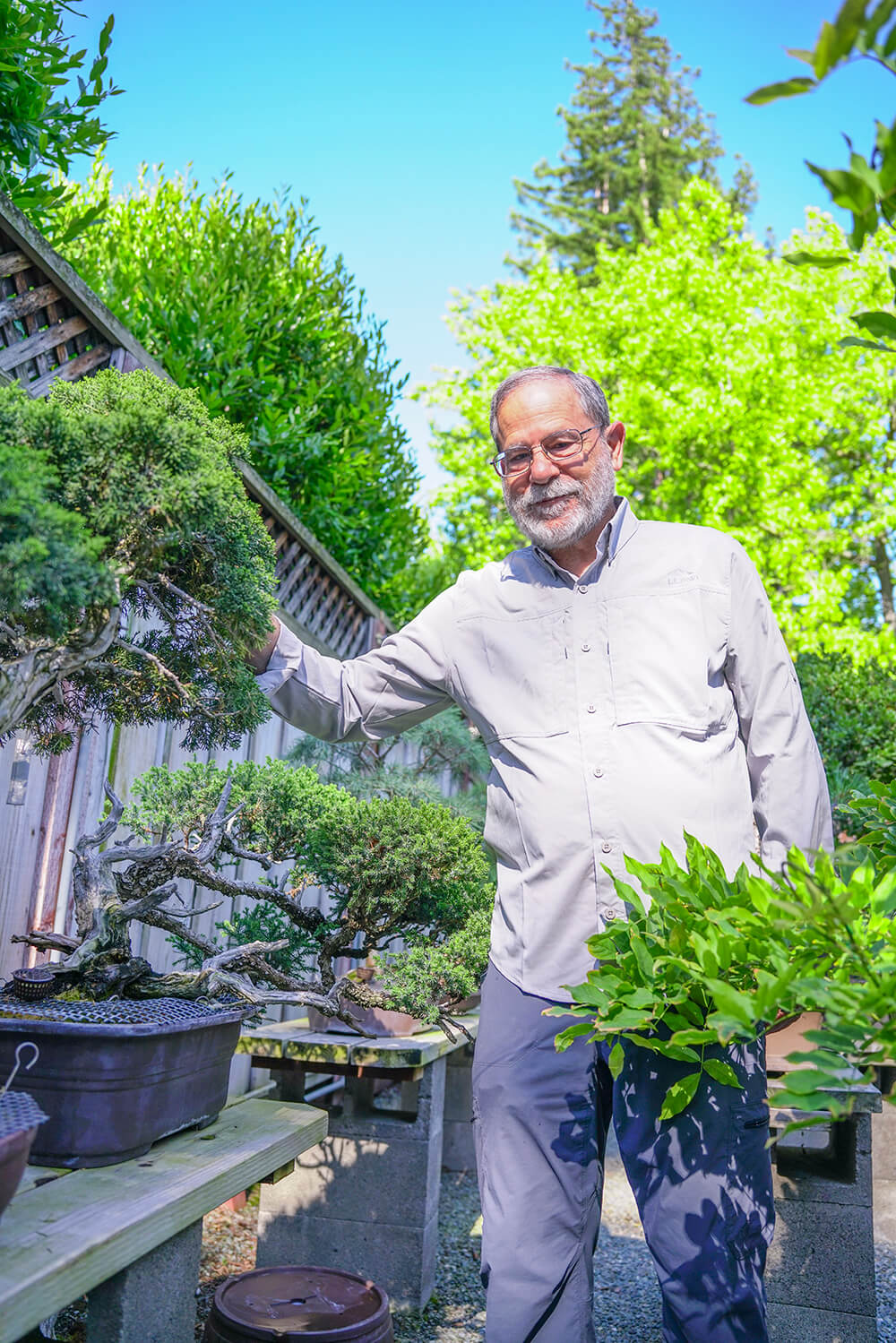
Cover Photography: Robb Most / Photography: Johanna Harlow
Devoted to the artistic shaping of miniature trees and shrubs from the age of 16, Michael, now 70, shows no signs of hanging up the pruning shears. “It’s kind of like a sculptor looking at a block of marble,” Michael describes of the practice of bonsai. “What is the sculpture in the marble? It’s mostly in the sculptor’s head. Bonsai’s a little like that.” A tree will take different forms depending on which branches you lop off or leave. “There’s more than one bonsai in every tree that’s presented in front of you. What do you want to see in this tree?”
Of course, these two forms of artistic expression also deviate. “If you’re sculpting in clay, you can always throw more clay on the wheel to add to bulk. But in bonsai, you have to grow that wood. Very often we grow these trees in the ground for a period of time to fatten them up.” It’s also a “living medium,” Michael points out. “If it’s done, it’s dead.”
One of the oldest English-speaking bonsai clubs in Northern California, Kusamura has been rooted on the Peninsula since nursery owner Toshio “Tosh” Saburomaru founded the Palo Alto group with his friends back in the 1950s. Tosh went on to teach nationally, and when Michael joined Kusamura in the ‘80s, the club flourished under the guidance of John and Sandy Planting. The couple lived on half an acre in Menlo Park, Michael recalls. “They had over 3,000 bonsai at one point,” he adds. “Sandy spent three hours a day watering.”
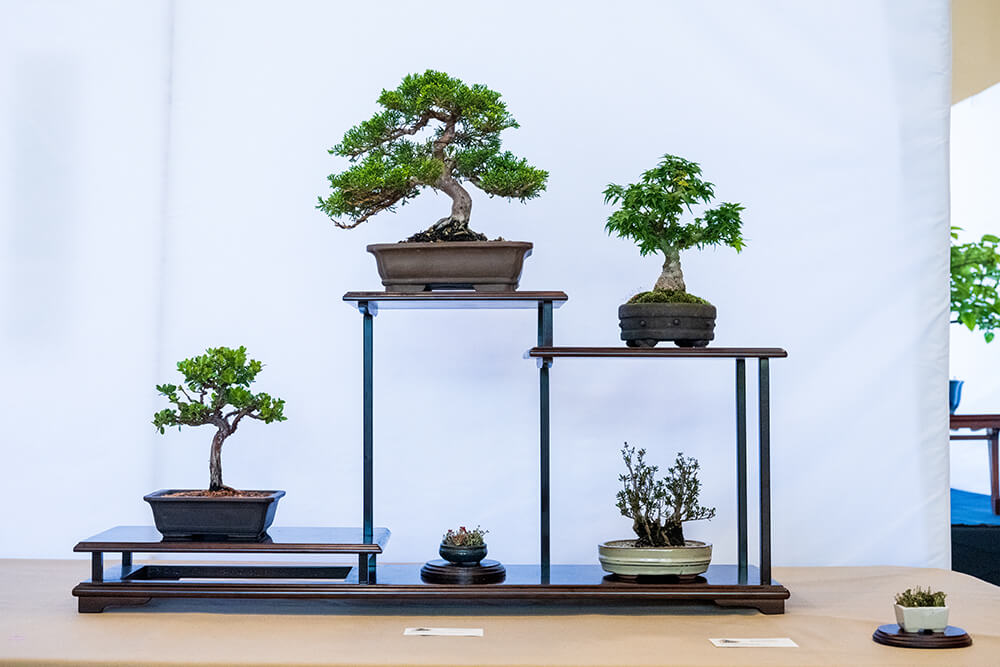
Photography: Robb Most
Michael gestures to a 200-year-old juniper of John’s he adopted after the man passed. Among its services, the club offers assistance to families of deceased bonsai enthusiasts—selecting easy-to-care-for trees to retain as keepsakes, while helping them sell and rehome the others. They also “nurse” sickly plants. “Health first, design second,” Michael stresses. “If you have a dead tree, it’s just emotionally expensive firewood.”
As he proceeds to the pergola where his shade-loving deciduous trees live, Michael digs deeper into the nuances of the ancient craft. “The Japanese artform of bonsai is in some ways very creative, but in other ways very rigid.” Upright, slanting, cascading—each tree style has its own set of guidelines. “There are rules about what shape and color and size the pot should be, and rules on where the first and second and third branches are, and where the apex (the top of the tree) is relative to the base and how deep the pot is relative to the diameter of the trunk,” says Michael. That said, there’s wiggle room for creative license. “I tell people, ‘First you have to learn the rules, and then, when you really understand them, then you’re empowered to break them when appropriate.’”
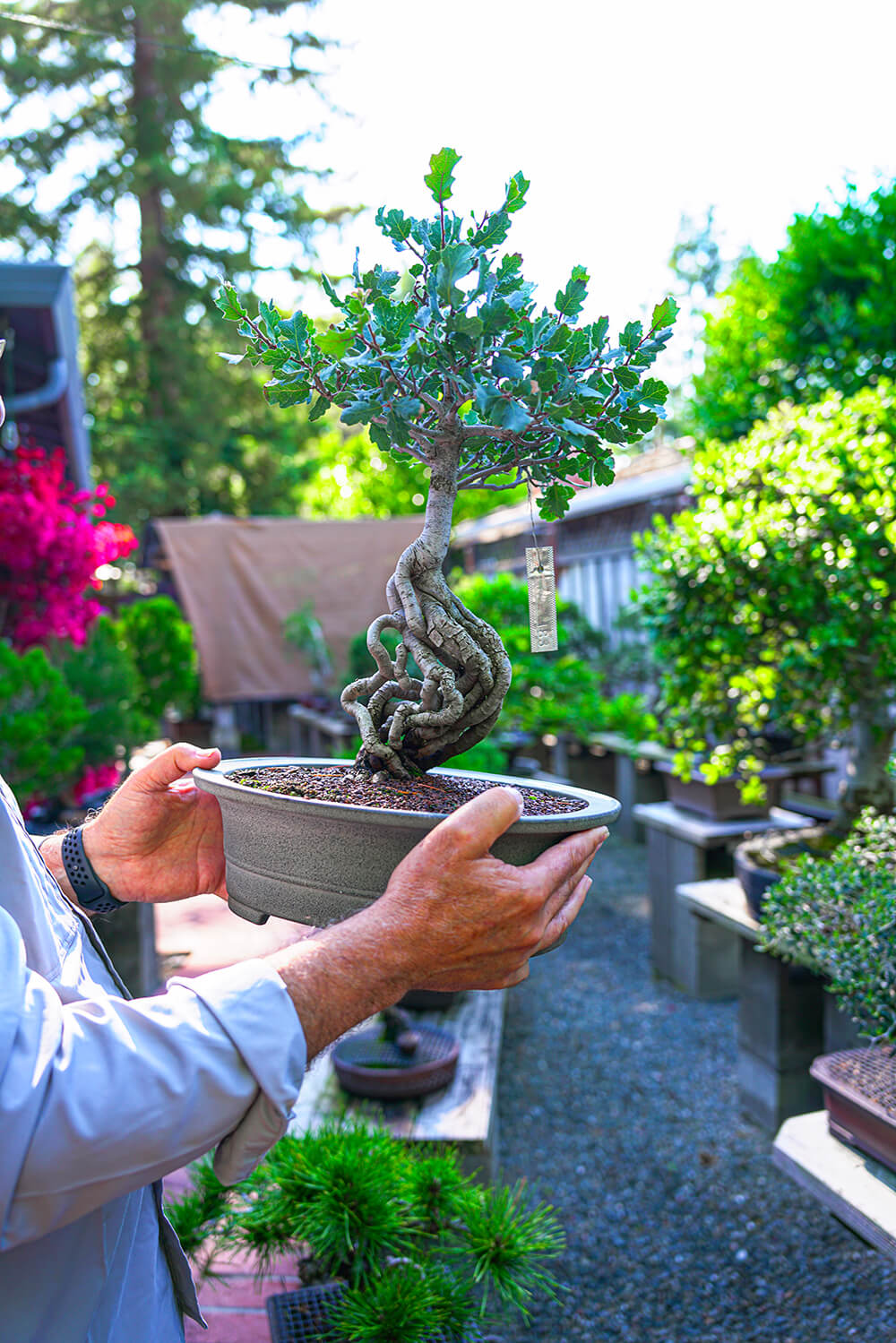
Photography: Johanna Harlow
Kusamura members certainly find beauty in the details. “Talking about pots is like arguing about religion in the bonsai community,” Michael laughs. “Everybody has a different notion about how big the pot should be, what shape, what color… The beauty of it is that there is no absolute, ‘correct’ answer.”
Due to Kusamura’s expertise, the club has been entrusted with the care of Filoli Garden’s vast bonsai collection. With a smile, Michael recalls the time he lent a hand with one of Filoli’s problem trees. “No one seemed brave enough to deal with it, so they called me in,” he recounts. “I said, ‘Okay, I need you to all agree that once I take these branches off, you’re not going to complain.’ Because you’ve gotta think twice and cut once!”
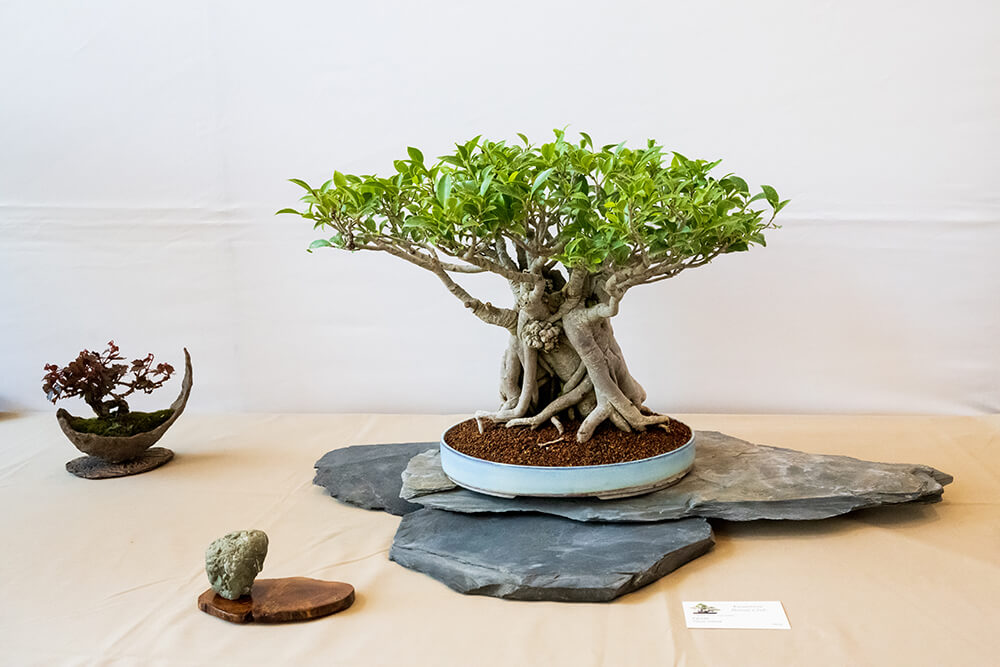
Photography: Robb Most
Speaking of which… Michael holds up a splitter tool, used to crack and tear branches in a way that mimics Mother Nature’s weathering process. “It looks like a medieval torture device,” he quips.
As a club member, Michael also shares his knowledge through demonstrations. Kusamura’s growth mindset means workshops for both beginners and more advanced members. “It’s really focused on lifting everybody up to enjoy that art form,” affirms Michael, who learned from a book during his first decade of bonsai. After joining, “I quickly recognized the advantage of being in a club where there were people who could say to me, ‘Don’t do this—because in ten years, you’ll realize that it was a bad idea.’”
Another perk is participating in the Annual Club Show, where 150 or so bonsai pose regally on their wood and stone stands. A formal display consists of three elements: a tree on a stand, a complementary accent plant and an artistic scroll (with calligraphy poems or illustrations). “Those three elements connect in some way—such as the motion of the tree, the flowers on the scroll and the flowers on the accent plant,” Michael explains. What’s more, “the stand harmonizes with the design and the shape and the character of the tree,” and the elements should be asymmetric. Not only is each display arranged to tell a cohesive story, it also allows guests to flow organically through the exhibition.
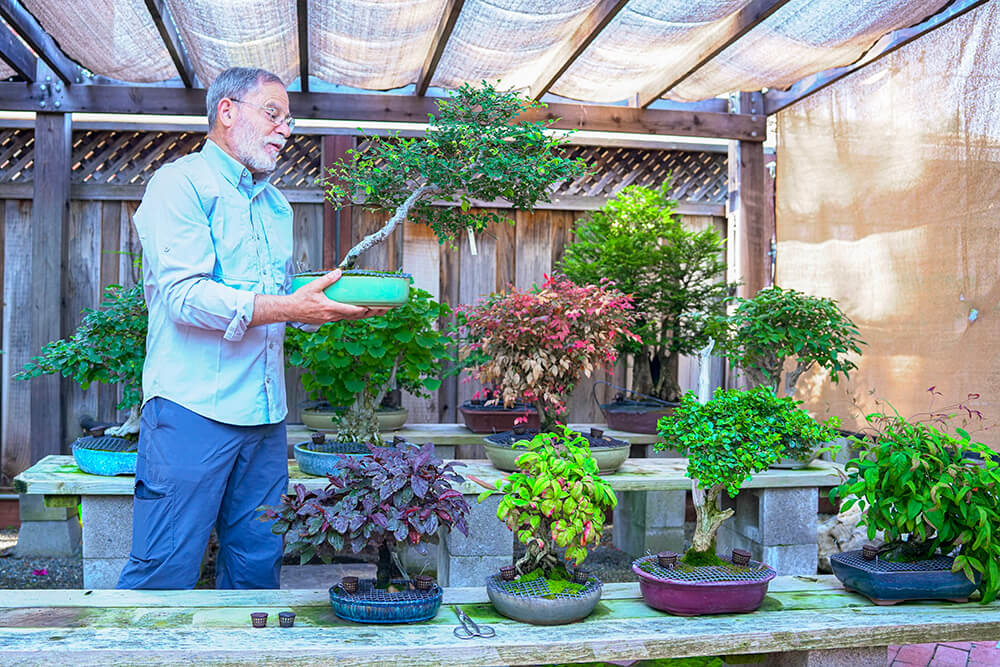
Photography: Johanna Harlow
At the end of his backyard tour, Michael comes to stand by a potted oak. “I acquired this tree from Tosh Saburomaru,” he shares. “He gave me this as a two-year-old seedling he had grown from an acorn and he said, ‘Put it in the ground, grow it big and then grow old with it.’” It seems a fitting tribute to the spirit of Kusamura Bonsai Club, as its members patiently and purposefully continue to nurture this centuries-old artform.


